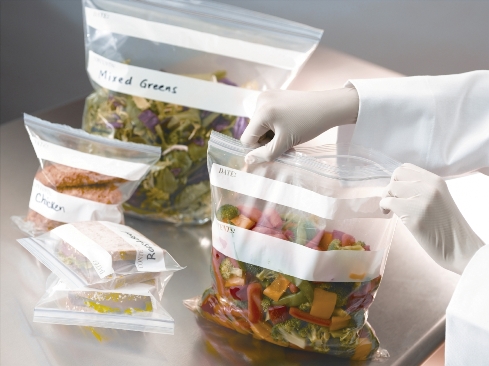Recommitting to Food Safety in 2025, One Meal at a Time
The start of a new year is a great time to cast aside old habits and the regrets of things you wanted to do but never found the time in past years. For the last few years, I have started out my blog for the year the same way – trying to encourage you to recommit yourselves and your business to food safety in the new year. Food safety has always been one of the cornerstones of public health and considering a few wide-spread and well publicized food safety outbreaks the U.S. experienced in 2024, food safety is certainly on the minds of our customers as we kick off the new year. Thus, it is the perfect time to refocus and reprioritize your food safety efforts – starting with the overall food safety environment in the United States.
The global food landscape has grown increasingly complex. Consider food miles, for example. Food miles is the distance that your food travels from where it was grown to where it was consumed. While the concept of food miles was developed with more of an eye toward sustainability and carbon emissions, the data is very useful in the food safety world, too. The most recent data shows that processed food in the United States travels approximately 1,300 miles, while fresh produce travels over 1,500 miles. Supply chains now span continents as opposed to cities or states as they may have in the early-1900s, and while we have more sophisticated technology to track food as it travels the food chain, it also shows how important it is to pay attention to recalls and other outbreaks to determine how they might impact our operations.
Take for example the most recent Listeria outbreak impacting a family-owned processing business. Before the outbreak, the company had over $1 billion in sales, and the recall of their products involved more than 7 million pounds. If a case of tomatoes, a case of ground beef, or any food product for that matter were recalled, would you be able to trace the product down in your production processes or would you just need to pull all of that type of product within your organization?
As we look at the foodborne outbreaks over the last year, many been mitigated or suppressed with good employee practices. Whether it is handwashing or controlling cross contamination, proper training of employees and ensuring that employees implement the knowledge they have received from training can go a long way in protecting our businesses. The start of the calendar year is always a good time to ensure your key staff are up to date on their food safety training and take stock of the new employees who need to go through training.
As I have said before, employee knowledge (and training) is great, but it is not the end all and be all. Food safety in the foodservice environment is not just about processes and technology—it’s about people, too. A strong food safety culture ensures that everyone involved, from our receiving staff to our chefs, and our servers to our managers know that nothing is so important that it cannot be done safely. Of course, this involves proper training, but it also requires a shared commitment to protecting our guests.
Recommitting to food safety in 2025 means embracing a proactive approach. It’s about staying informed, leveraging technology, fostering a safety-first mindset, and working collaboratively. Whether you’re in food production, foodservice, or preparing meals at home, every step counts in building a safer food system.
At FoodHandler, we are committed to helping you recommit yourselves to food safety in 2025! You are the reason we continue to provide free food safety resources and host our SafeBites Food Safety Webinars, all to bring you the most current information about food safety, right to your computer screen. We hope that all of this allows you to produce the safest food possible, one meal at a time. Risk Nothing.
Call out: Food safety in the foodservice environment is not just about processes and technology—it’s about people, too.
Notes: Heading 2, Centered, Red Text, Animated
READ MORE POSTS
Routes of Foodborne Illness & Germs
From your sniffling coworker to the raw chicken on your kitchen cutting board, everyday life is full of potential infectious hazards. With germs so common and seemingly everywhere, knowing how germs spread is vital to preventing infection and foodborne illness. There are seven possible ways for the transmission of bacteria and viruses to take place. Although some of these microorganisms in our environment are good for us and protect us, disease causing pathogens are the germs or bad guys.
Handling Leafy Green Salad
We have had several produce outbreaks of foodborne disease from our lettuce, spinach, and other greens in the last several years that have been devastating to the produce growers and distributors, retail grocery stores, restaurants, and consumers.
Food Packaging Safety in a Vacuum
Extending the shelf life of fresh foods has come a long way in the food industry since curing meats with salt and sugar or canning vegetables with heat processing. The food service and consumer markets needed some better visual packages to draw the eye to the freshness factor and the technology of food packaging has filled our dinner plate. Vacuum packaging and modified atmosphere packaging, shortened to “MAP”, are the terms used for the method of food packaging used every time we choose convenience over more complex scratch meal preparation. According to industry statistics, billions of packages of vacuum and MAP-packaged foods flood the marketplace today. In both modified-atmosphere and vacuum packaging, food is packaged in a pouch made of barrier film.
The Eleven Commandments of Food Safety at Your Restaurant
Lists help us remember all kinds of information. Given the list of recent national foodborne outbreaks in the news, keep repeating this list to your food service team. They are kind of like “commandments”. As a professional in a food service facility we should think of the very basic food safety concepts that every crew member should aspire to learn, even though this list may have different priorities based on your menu. The first 3 apply to anyone who serves food, from a bag of popcorn to a full course meal. As chefs or managers, if we can “set the example” by repeating good food safety practices visibly to the crew, it will help them understand how important it is to the success of your facility. Thou shalt:










